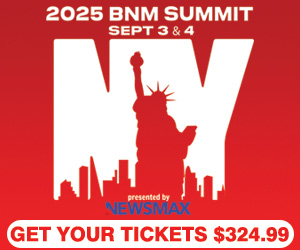We know that usage of “traditional” media (sounds better than “old media”) is declining. That’s to be expected because when consumers are offered more and more choices yet have only so much time to listen to radio, podcasts, watch TV or YouTube, the result is greater fragmentation.
Sure, broadcast radio’s audience has declined in recent years. Some of the decline is self-inflicted and some stems from changes due to the COVID pandemic and “work from home.” One of radio’s strengths is listening while commuting. No commute equals less listening.
But perhaps the situation is not as bad as we think. Consider that local newspaper circulation has been decimated to the point that some states and localities have proposed or passed legislation to promote local journalism through subsidies or tax breaks.
I don’t have access to the data, but how much audience remains for local television? The broadcast networks aren’t helping when they’re happy to promote that every network show is on their streaming service. Remember when radio turned down ads for SiriusXM because there was no desire to help a competitor? Local TV promotes its network’s streaming service and pays “reverse compensation” for the privilege!
Two weeks ago, I tossed out a few Nielsen numbers with respect to the change from the “five-minute rule” to the “three-minute rule” for PPM. AQH estimates showed nice gains, as expected. But what if we went back further to pre-COVID times? What if we compared January 2020 to the present?
First, let’s consider the changes to the audio landscape since the start of 2020. Broadcast radio (and I include streaming of the AM/FM signal as part of broadcast) faces far more competition today. In streaming music, Spotify users in North America increased from 77 million to 107 million since 2020 while subscribers increased from 40 million to 64 million. Apple Music and Amazon Music count as well (the three services together account for over 90 percent of the paid music streaming in the US). Pandora still exists, too.
Let’s not forget other major options for music including TikTok and YouTube. The Pew Research Center trends showed TikTok was used by about a third of Americans in 2024, but that varies widely by demo. For 18-29, the figure was 59%, but for 50-64, the percentage was just 26%. Yes, TikTok is used for more than music, but was just taking off in 2020.
Then there is podcasting which has achieved strong growth in the battle for ears. Per Edison Research, in 2020, 24 percent of Americans 12+ listened to a podcast weekly, essentially a podcast cume. Last Thursday, Edison released the 2025 figure, which was 35 percent for audio podcasts (adding video podcasts pushes the figure to 40 percent).
SiriusXM, while having problems of their own, has cut their “trial” subscription fees. Forget telling the call center rep that you won’t pay over $5 a month. That’s $3 now and a free ad-supported version is expected to arrive later this year.
That’s a hell of a lot of competition for the time Americans can devote to audio information and entertainment.
Some caveats as this was not a pure “apples to apples” comparison. The January 2020 monthly started on January 2, while the 2025 version began on January 9. Back in 2020, panelists carried the “pager-style” meter while in 2025, panelists wore the PPM watch to record their media usage. And we have the increase in 2025 AQH due to the change to the three minute rule.
Once again, we’ll examine four demos for the Monday-Friday 6 AM-7 PM daypart for the PPM markets. The demos are Persons 18-24, 25-34, 35-44, and 45-54. And again, the last two are not discrete weighting variables. The results are for AQH persons, meaning New York and Los Angeles carry far more weight than West Palm Beach and Memphis.
| AQH Persons | P18-24 | P25-34 | P35-44 | P45-54 |
| Jan 20 vs. Jan 25 | -29.7% | -43.6% | -24.3% | -27.0% |
In my view, other than Persons 25-34, the results weren’t bad considering the circumstances. The previously cited changes suggest that the differences could be a lot worse. And as more workers are told that work from home is no longer acceptable, the results may even improve a bit.
We know that January 2025 was not a true “apples to apples” because of the three-minute rule. Let’s compare January 2020 to January 2024, as both months used the five-minute rule.
| AQH Persons | P18-24 | P25-34 | P35-44 | P45-54 |
| Jan 20 vs. Jan 24 | -38.3% | -47.6% | -34.8% | -34.7% |
The results weren’t pretty, but I’ll bet some other traditional media would happily take those figures.
Where does this leave us? Sure, AQH listening is down over time, but other than P25-34, we’re not at death’s door.
The results brought to mind one of the funniest movies of all time (if your taste is similar to mine), “Monty Python and the Holy Grail” and the “Bring Out Your Dead” scene. Set in the Middle Ages, a man pushing a cart with dead people, calls out “Bring out your dead” and pays for the bodies. A resident offers up a body for nine pence, but the person protests, saying “I’m not dead”, “I’m getting better”, and “I feel fine”.
Sometimes, it feels like radio is the body being sold to the cart master, constantly saying “I’m not dead”, while the person trying to get the nine pence suggests death is imminent, “Well, he will be soon. He’s very ill.”
If you know the movie, the next event is the “not dead” person is conked on the head, the customer gets his nine pence, and the cart master moves on. If you’ve never seen the movie, watch it (available on Amazon Prime and other streamers).
Much like the expected demise of radio in the ‘50s after television took off, the business is not dead yet, but there are plenty of competitors who would gladly help kill it off (and perhaps a few insiders as well). Don’t let them do it. We can get better and even feel fine.
Let’s meet again next week.
Barrett Media produces daily content on the music, news, and sports media industries. To stay updated, sign up for our newsletters and get the latest information delivered straight to your inbox.




